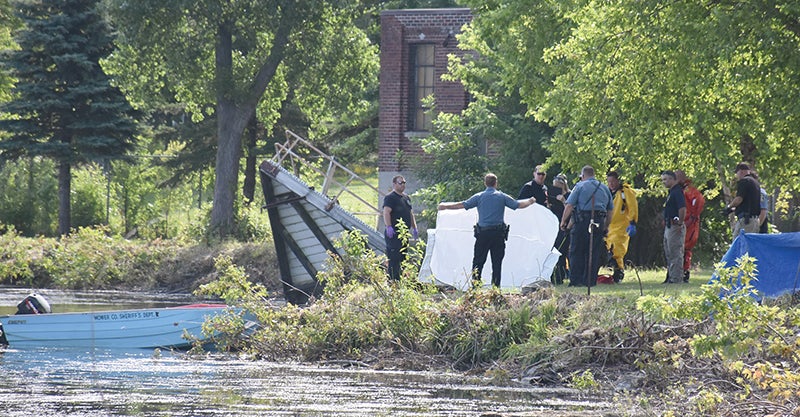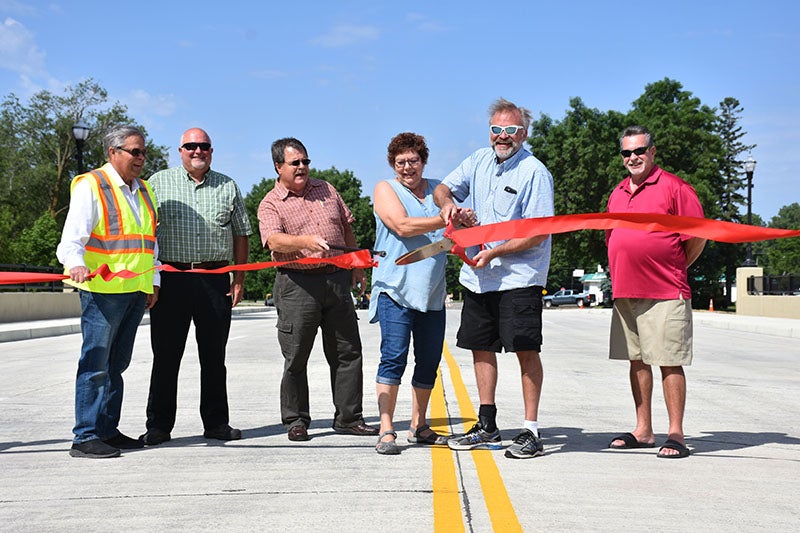She counted everybody a half-century ago
Published 12:00 am Tuesday, May 16, 2000
M.
Tuesday, May 16, 2000
M. G. Rolfson had been re-elected Austin’s mayor that year.
Robert Shaw, a Third Ward alderman at the time, gave him a run for his money, but Shaw’s bid fell 200 votes short.
When spring arrived, Emil Scheid put the Austin Packers through their spring training paces in preparation for the start of the Southern Minny League season.
Hormel Foods Corp. announced it would "can chili con carne" on the West Coast. The new facility was located at Stockton, Calif.
Meanwhile, Fantle’s in downtown Austin advertised the Wonder Weave nylon girdle with "hip control."
And, Rachel Neiswanger prepared to count everyone who lived in Austin.
It was 1950 and Mrs. Neiswanger said, "It took longer to count the census in those days." An understatement of the facts, to be sure.
A half-century ago, the U.S. Census did, indeed, take longer. Fifty years ago, they did it by hand. The only high technology piece of equipment was a typewriter for final reports. Adding machines complete with rolls of paper and the numbers on them were an important part of the record-keeping.
There were no computers, fax machines, cell phones and other devices that make census-taking so much easier today.
David (now deceased) and Rachel Neiswanger were lifetime Democrats and it was an act of patronage – sort of – that got the woman the job of heading the census-taking in the city of Austin.
And, also making census-taking more difficult 50 years ago was this: more people.
The population was greater in the city of Austin and Mower County.
"My youngest child was only 2 years old at the time and the oldest was 12," Mrs. Neiswanger said. "Dave was working, of course, but women in those days didn’t work outside the home."
"Oh, there were women working at the plant (Hormel Foods Corp.) and in stores or as secretaries, but it wasn’t quite like it is today," she said.
"One of the reasons was that there wasn’t all the child care we have today. Some women did baby sitting, but it was a matter of finding them, because they were so few," she said.
Her husband Dave was a tireless Democrat-Farmer-Labor Party worker all his life. He was at the time a friend of Karl F. Rolvaag, who would become Minnesota’s lieutenant governor (1954 to 1962) and governor (1962 to 1966).
"Karl offered me the job of being in charge of the census for Austin in 1950," Mrs. Neiswanger said. "I had to take a test first, of course, but I came out with the highest grade and the job was mine."
The Neiswanger family lived in southeast Austin’s Decker Acres subdivision, where legendary builder Chet Weseman, Mrs. Neiswanger’s brother, who later built Sterling Shopping Center, had constructed homes.
"Highway 16 was the main highway through Austin in those years. There was no Interstate 90," she said. "Mapleview had, maybe, a dozen homes."
She was given the responsibility of heading the census-taking in Austin and took over an office on the top floor of the old post office along what is now First Street NW near St. Olaf Lutheran Church.
"I had 13 workers. Two men and the rest women. There were both Democrats and Republicans among them. I wasn’t that political," she said. "We would start early in the morning by giving the workers a big folder and sending them out into a designated neighborhood to count the people.
"In the evening, they would return and present their figures for the day as well as any problems they might have had. I would have to go over their figures and make sure they were accurate. The census was mighty important to all of us."
Because she knew Austin so well, she exercised her prerogative to assign the census-takers to the neighborhoods where she knew they would have no trouble getting the information they needed.
"I was able to select where they went," she said. "We had to write down their answers to all the questions, so we had to be sure they would even speak to us. There was a part of town, which was considered where the so-called ‘noisy’ people lived, and that’s the area that gave us a little trouble.
"Actually at the time, Austin didn’t have a great number of really very nice homes. There were some near Sumner School and along what we called Kenwood Avenue (Fourth Street), but really, the houses were all alike it seemed. Of course, almost everybody worked at Hormel Foods in those days.
"Either you worked in the plant or the office or you worked downtown. The city was kind of divided between the Hormel people and the downtown people in those days. Austin was very different."
It was very different in size, too. When Mrs. Neiswanger and her crew finished taking the city’s 1950 census, the final figure was 23,100 residents.
Mower County’s census was taken separately by another supervisor and crew and the county’s total in 1950 was 42,277.
Ten years later, Austin’s census was even larger, 27,908, while Mower County’s population had grown to 48,498.
Then, the population decline began.
By 1970, the city’s population was 26,210 (but only after a recount that saw a jump from the early figure of 25,074) and Mower County’s 1970 population was 43,783.
Another decade passed and the city’s population fell to 23,020 and Mower County’s to 40,390 in 1980.
In the last census taken, the city’s population was 21,907 and Mower County’s was 37,385 in 1990.
Last month, Americans received either a short form or a long form for reporting census information. The census is considered vitally important to government units, in part, because it is a yardstick for determining local, state and federal aid.
From the census, demographical information will help planners and others better design and manage population centers.
Now, enumerators are knocking on doors to contact those individuals who did not respond to the mailed requests for census information.
A major advertising campaign this winter helped Americans prepare for the arrival of the census forms in the mail. According to the Census Bureau, the response rate in Minnesota was 72 percent and overall, the national mail response rate is 65 percent.
Now remarried since her first husband David’s death, Mrs. Neiswanger has this simple advice for all Americans: "Fill out the form. It’s important to the country and that means all of us."





